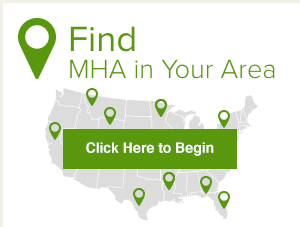You are here
Mental Health in America - Ranking Guidelines
This data and accompanying chartbook present a collection of data that provides a baseline for answering some questions about how many people in America need and have access to mental health services. The data and table include state and national data and sharable infographics.
MHA Guidelines
Given the variability of data, MHA developed guidelines to identify mental health measures that are most appropriate for inclusion in our ranking. Indicators were chosen that met the following guidelines:
- Data that are publicly available and as current as possible to provide up-to-date results.
- Data that are available for all 50 states and the District of Columbia.
- Data for both adults and youth.
- Data that captured information regardless of varying utilization of the private and public mental health system.
- Data that could be collected over time to allow for analysis of future changes and trends.
Our 2019 Measures
- Adults with Any Mental Illness (AMI)
- Adults with Substance Use Disorder in the Past Year
- Adults with Serious Thoughts of Suicide
- Youth with At Least One Major Depressive Episode (MDE) in the Past Year
- Youth with Substance Use Disorder in the Past Year
- Youth with Severe MDE
- Adults with AMI who Did Not Receive Treatment
- Adults with AMI Reporting Unmet Need
- Adults with AMI who are Uninsured
- Adults with Disability who Could Not See a Doctor Due to Costs
- Youth with MDE who Did Not Receive Mental Health Services
- Youth with Severe MDE who Received Some Consistent Treatment
- Children with Private Insurance that Did Not Cover Mental or Emotional Problems
- Students Identified with Emotional Disturbance for an Individualized Education Program
- Mental Health Workforce Availability
A Complete Picture
While the above fifteen measures are not a complete picture of the mental health system, they do provide a strong foundation for understanding the prevalence of mental health concerns, as well as issues of access to insurance and treatment, particularly as that access varies among the states. MHA will continue to explore new measures that allow us to more accurately and comprehensively capture the needs of those with mental illness and their access to care.
Ranking
To better understand the rankings, it’s important to compare similar states.
The rankings are based on the percentages or rates for each state collected from the most recently available data. For most indicators, the data represent data collected up to 2015. States with positive outcomes are ranked higher than states with poorer outcomes. The overall, adult, youth, prevalence and access rankings were analyzed by calculating a standardized score (Z score) for each measure, and ranking the sum of the standardized scores. For most measures, lower percentages equated to more positive outcomes (e.g. lower rates of substance use or those who are uninsured). There are two measures where high percentages equate to better outcomes. These include Youth with Severe MDE (Major Depressive Episode) who Received Some Consistent Treatment, and Students Identified with Emotional Disturbance for an Individualized Education Program. Here, the calculated standardized score was multiplied by -1 to obtain a Reverse Z Score that was used in the sum. All measures were considered equally important, and no weights were given to any measure in the rankings.
Along with calculated rankings, each measure is ranked individually with an accompanying chart and table. The table provides the percentage and estimated population for each ranking. The estimated population number is weighted and calculated by the agency conducting the applicable federal survey. The ranking is based on the percentage or rate. Data are presented with 2 decimal places when available.
Due to limitations in sample size for youth, measures for Youth with MDE who Did Not Receive Mental Health Services and Youth with Severe MDE who Received Some Consistent Treatment include data from various annual averages. Youth with MDE who Did Not Receive Mental Health Services includes data annual averages 2014 – 2016 and 2011-2016. Data for Youth with Severe MDE who Received Some Consistent Treatment include annual averages 2014 – 2016, 2011-2015, and 2010 – 2013. Annual averages are indicated in the Appendix, Table 1 and Table 2.
Data for the measure Adults with Disability who Could Not See a Doctor Due to Costs could not be calculated in time for the release of this report. Data from the 2018 State of Mental Health in America report was used to determine final rankings.
For the measure Students Identified with Emotional Disturbance for an Individualized Education Program, due to limitations in sample size, the 2014- 2016 figure for the state of Wisconsin was not available. This report notes the 2014-2015 figure.
Survey Limitations
Each survey has its own strengths and limitations. For example, strengths of both SAMHSA’s National Survey of Drug Use and Health (NSDUH) and the CDC’s Behavioral Risk Factor Surveillance System (BRFSS) are that they include national survey data with large sample sizes and utilized statistical modeling to provide weighted estimates of each state population. This means that the data is more representative of the general population. An example limitation of particular importance to the mental health community is that the NSDUH does not collect information from persons who are homeless and who do not stay at shelters, are active duty military personnel, or are institutionalized (i.e., in jails or hospitals). This limitation means that those individuals who have a mental illness who are also homeless or incarcerated are not represented in the data presented by the NSDUH. If the data did include individuals who were homeless and/or incarcerated, we would possibly see prevalence of behavioral health issues increase and access to treatment rates worsen. It is MHA’s goal to continue to search for the best possible data in future reports. Additional information on the methodology and limitations of the surveys can be found online as outlined in the glossary.







this page